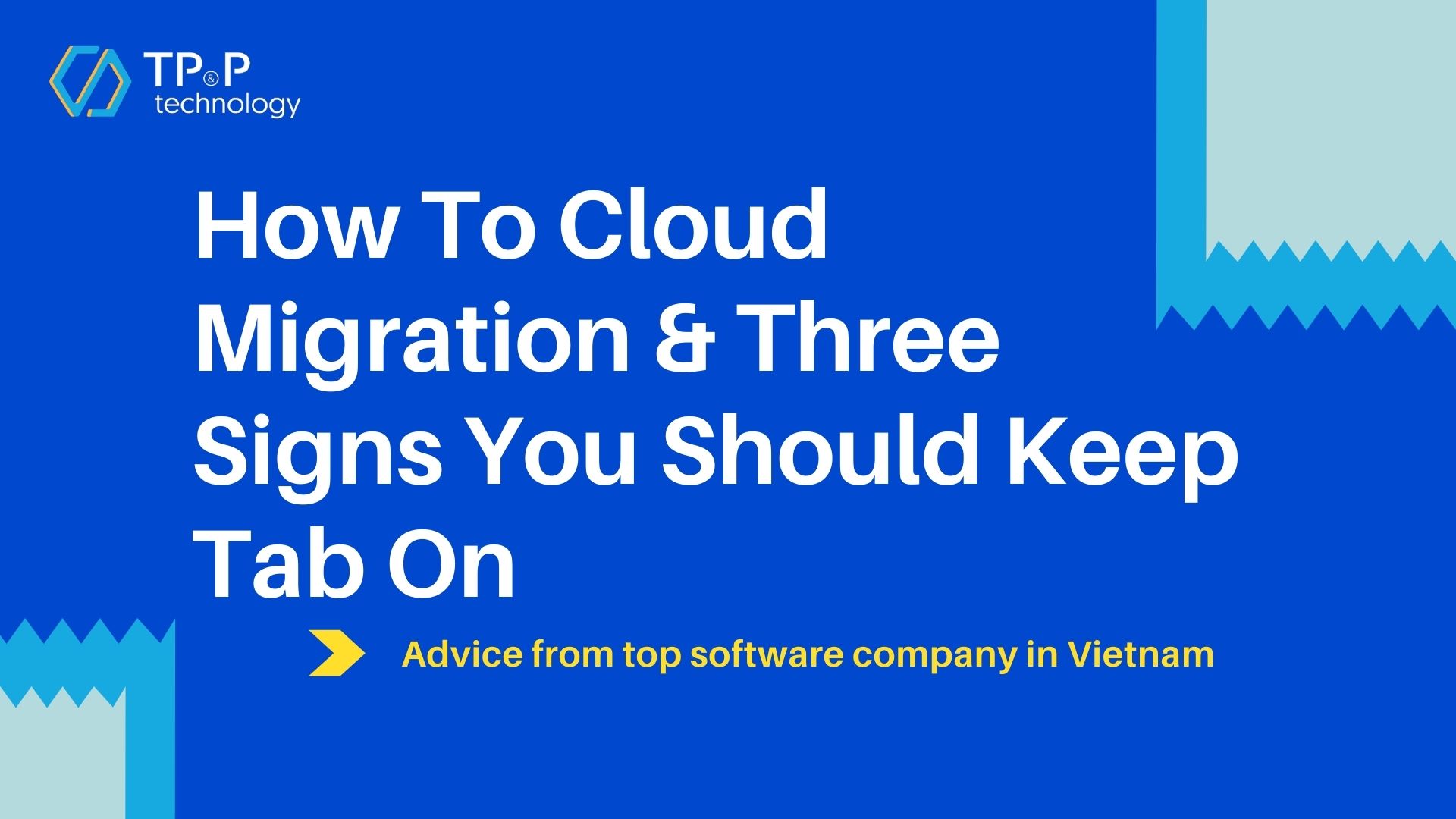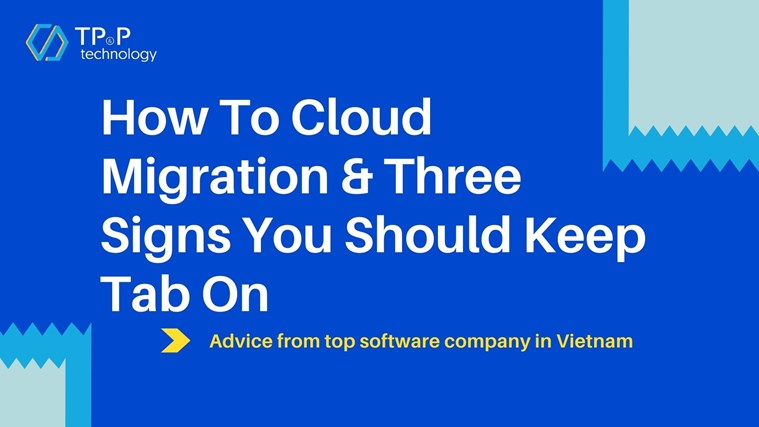
Cloud Migration: How To Do It Effectively? And Three Signs You Should Keep Tab On
Many businesses are moving their software to the cloud due to the benefit it offers. There are trends in the IT industry as well as in others. The migration to the cloud was considered the megatrend over the past decade.
In most cases, it is an indispensable step in the whole digital transformation journey. Moving software to the cloud meaning your software developers team doesn’t have to handle cumbersome infrastructure; they can focus on work that brings more value to the businesses.
You can also save costs since you no longer have to buy and maintain infrastructure. One thing for sure that you know you always use the latest version of the software because the vendor is responsible for keeping the software up to date.

As we move to the 4.0 industrial revolution, we strongly believe that all businesses should aim to migrate their enterprise software to the cloud. Deloitte revealed one of the top reasons for moving to the cloud due to data protection and security. Not to mention, using the cloud allows you to have full control over data storage and know from where data is processed and accessed.
When it comes to cloud computing and cloud migration, some common questions are: what about my enterprise software? Should I also move it to the cloud? If so, what options do I have? And what should I look for in cloud managed services providers?
This article will answer all questions above and provide you with information on how to cloud migration. Let’s have a look!
Which type of cloud should we use?
When it comes to cloud computing and enterprise software, it critically depends on the security concerns level. For example, if you’re really concerned about data security, then a private cloud is your choice. But if your software doesn’t contain susceptible data, dedicated storage in the public cloud is good enough. For generally sensitive data like customer information, e-commerce transaction, or enterprise resources planning, public clouds will serve just right.
Usually, companies will take the first step toward cloud computing, with some data retained on-premise, while some moved to the cloud. Mildly sensitive data like customer relationship management (CRM) or human capital management (HCM) can be migrated to the cloud. In contrast, other critical ones like financial ledgers can still be stored on-premise. However, more businesses are relying on public clouds to build mission-critical systems.
Different approaches you can take toward cloud migration
There are four ways to migrate your enterprise software
Lift and move
You can contact any cloud-managed services companies and ask them to lift your whole server room and move it to the cloud. When doing this, you don’t have to manage the infrastructure but keep in mind that you still have to maintain the enterprise software yourself.
Low code
This is where low-code/no-code packages for standard processes like CRM and preset elements are lifted and moved to achieve a certain degree of modernization.
SaaS service
SaaS service can help you to cloud migration. All you need to do is stop using the on-premise one and subscribe to a cloud service. This usually involves changes, especially the standardizing business processes, and you can get updates and innovations from the services provider.
Native new build
Another way to cloud migration is to rebuild your own cloud-based enterprise software. This is a huge undertaking; you need to consider the future direction of your business, the process you want to operate, and the software, infrastructure, and personnel required, and start from a strategic point of view. Although it might sound daunting, it can provide an opportunity to transform the entire enterprise and use containers and abstraction to improve software modernization, thereby gaining greater flexibility.
What should you look for in a potential cloud-managed service provider?
When migrating your enterprise software to the cloud, you might want to reach out to some experts to help you with the process. The primary thing you should look for is a provider with a cloud-native solution, which means enterprise software that has been converted to run in the cloud. The concept is different from cloud-first, which means the software was originally built in the cloud and never on-premise before.
So far, few enterprise software vendors have implemented cloud-native solutions. Many offer dedicated hosting services, but the term is not the same. It just simply implies that they have lifted and moved their software from on-premise to the cloud. Of course, there is nothing wrong with this, but it will not be as efficient as the cloud-native approach.
In addition, you also should look at how your potential vendor adopts other cloud software since every element of the enterprise software needs to work with other systems in the ecosystem. The main functions are:
- Open: use open API to build software connect with other systems
- Flexible: the software may have standard modules, but they can be easily configured to adapt to special processes (no coding required)
- Extensible: The software comes with a set of integrated tools that can be connected to other systems in your ecosystems, whether they are on-premise or on the cloud.
Also, ask your cloud enterprise software partner to confirm the transition you are going to make and provide you with a structured migration plan. If they claim that it is easy to start using their software, they might have overlooked some important details.
Be concerned if:
- Your potential vendor doesn’t discuss or give you a migration pathway.
- It does not connect easily with other cloud software.
- The software cannot be customized on a low-code or no-code basis.
If there is no concern raised to this point, we strongly recommend everyone switch to cloud-based enterprise software, those in most sensitive cases excluded.
If you have any custom software development requests or cloud-managed services, drop us a line to know more about how our teams of experts can help you!



